Are you having trouble finding the right type of capacitor for your circuit? Read through this article for more info.
Introduction
There are several types of capacitors available nowadays. It can be argued that you can use a kind of capacitor in place of another. However, there may be advantages and disadvantages to using a specific type. Additionally, the form factor can sometimes affect your target product enclosure.
Aluminum Electrolytic Capacitors

A popular type of capacitor that’s easily distinguishable by its long cylindrical shape. You can see aluminum electrolytic capacitors almost in every kind of power supply circuit. The reason for this is its high capacitance value that can hold a lot of charge. They are also available in a wide selection of working voltage ranges. They’re commonly used as filters to smoothen the ripple voltage of a power source.
One of the main disadvantages of using this kind of capacitor is its high ESR (or Equivalent Series Resistance). This is due to its construction. This limits its frequency response, and you’ll see most of its application on low freq power lines and audio applications. However, low ESR electrolytic caps are already available for a higher cost. Low ESR caps can be used for higher-frequency power converters.
Note that Aluminum Electrolytic Capacitors are polarized, so you must check them closely when mounting them on your boards.
Mylar Capacitors (Polyester Capacitors)
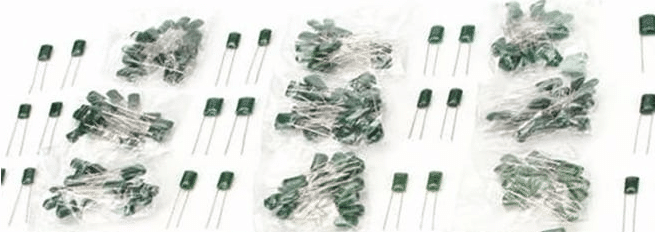
Mylar capacitors are the way to go if your projects are exposed to heat or humidity. These capacitors have excellent characteristics in harsh environments. They are used in power supplies that heat up and are stored in closed spaces.
Mylar capacitors have low ESR characteristics. This makes them suitable for high-frequency applications. Additionally, they can withstand high voltage spikes better than other capacitor types.
These caps are usually non-polarized so that you can place them on your boards in any orientation without worries.
Ceramic Disk Capacitors
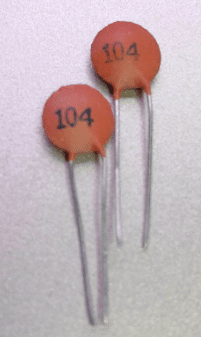
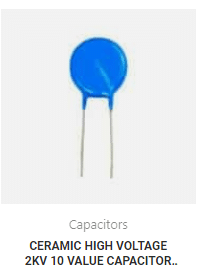
Many projects have this circular, flesh-colored capacitor (labeled 104) that acts as a filter for the power supply pins of an IC. This is a ceramic disk capacitor. You’ll see them in many hobby projects.
Ceramic disc capacitors come in various voltages and charge values. The main advantages of ceramic disc capacitors are their good frequency response and low cost. The disadvantage of using them is they usually can’t carry very large charge values, unlike electrolytics.
These capacitors are non-polarized same as the Mylar capacitors.
MLCC type Capacitors
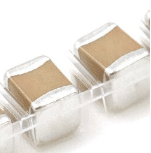
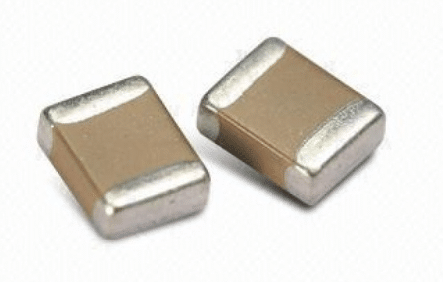
MLCC stands for Multilayer Ceramic Capacitor. These capacitors are another form of the ceramic type in that the ceramic dielectric is sandwiched between electrodes. The construction allows for lower ESL (Effective Series Inductance) and ESR. However, MLCCs tend to have lower working voltages when compared to their ceramic disc-type equivalent.
MLCCs in SMD form are easily produced; you can see them in almost any electronic product on the market. It’s cheap and reliable. They are non-polarized, so you can place them in your circuits without worrying about their orientation.
Tantalum Capacitors
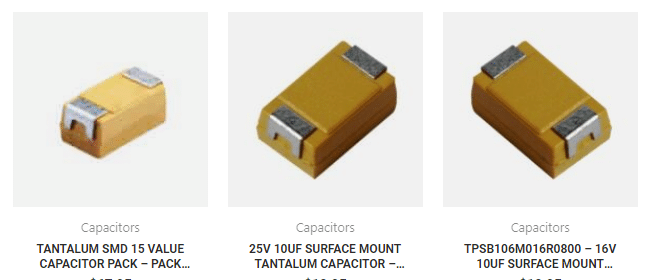
You can go with tantalum capacitors if you want high capacitance in a small form factor. Tantalum caps boast of having high charge values like their electrolytic counterpart. However, note that pure tantalum capacitors are being phased out in some electronic products, particularly in high-critical applications. Tantalum capacitors have the disadvantage of poor reliability when their specifications are tested near their limit and can cause fires. Their life expectancy is roughly equivalent to electrolytic caps.
Tantalum caps have the advantage of lower ESRs compared to their electrolytic counterpart. However, they have lower working voltages. Note also that they must be installed while checking their polarity unless you want to see smoke in your workplace.
Polymer Capacitors

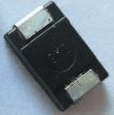
Polymer capacitors have improved reliability and safety profiles than their tantalum counterpart (although there are now polymer-tantalum capacitor variations). This feature and high charge capacity make them favorable in modern-day electronics.
Polymer caps have lower available working voltages than their electrolytic counterpart. Consequently, this feature cap makes them viable for modern-day low-voltage digital electronics.
Additionally, polymer caps tend to have low ESR, and their SMD packages can have very low vertical profiles.
These caps are usually polarized like electrolytics.
Conclusion
Choosing the correct type of capacitor may be critical for your application. Be sure to learn the advantages and disadvantages of each. With this, you can find different kinds of capacitors in our online shop for your projects.




